Can Cover Cropping Heal Abused Soil? A Mad Farm Reflection
 Print This Post
Print This Post
By Lee Rinehart, NCAT Agriculture Specialist
In my past two blogs, I reflected on planting cover crops on small plots and gardens. If you missed them, you can read them here and here. I wrote these blogs because, as an agricultural educator, I need to ground truth what I teach. My little mad farm helps me do that. It keeps me honest. And since cover cropping is scalable to just about any size farm or garden, it made sense to conduct some field experiments of my own. To practice what I suggest others do — plant, observe, and adapt.
In the past 13 years, I have noticed the difference covers make in my gardens. Darker soils, better water infiltration, less fertilizer. I’ve also seen more insects with the diversity of blooming plants that occupy at least a third of my garden each summer. Figuring out the rotations and selecting species in the winter is a joy and watching them grow tall and dense inspires me. Rye stretches its glaucous seedheads skyward as sunflower, buckwheat, cosmos, and mustard emerge in the adjacent bed, soon to invite bees, flies, wasps, and butterflies, and the occasional goldfinch.
I sit on the garden porch and reflect on the various practices I have incorporated here. Diversity of food crops and flowering annuals. Legume and grass covers. Rotations according to families. Compost. All the stuff the farmers and researchers have been telling us. And it makes me think… what’s making this little pocket of peace work is not merely cover cropping. It’s more likely a result of the several practices that are implemented throughout the year. And it’s the time I’ve been still and just observed. I’ve seen the synthesis of diversity, in plants and practice, stimulate ecosystem processes to yield the benefits that have accrued to this feral garden. And I wonder, with all the hype about cover crops these days, is there any hope that its singular use can overcome the soil degradation that has occurred in the past 70 years of continuous, monoculture farming? I ask this question because it seems many are advocating just this. Plant a cover crop and, bingo, you’re a regenerative farmer.

Photo: Lee Rinehart, NCAT
I did some reading. We know that industrial monocultures achieve high yields for global markets. But it’s generated some pretty negative outcomes, including widespread degradation of land, water, and ecosystems, leaving rural communities gutted and left to the tumbleweeds. We’ve been growing monocultures (one plant species, i.e., corn, soybeans, rice, etc.) year after year, usually with a non-cover fallow, intensive moldboard plowing, and the additions of synthetic nitrogen fertilizer. The resulting degeneration of these soils occurred over a long period of time and what we ended up with was erosion, nutrient loss, and soil biological depletion. Many ask, can these soils be repaired with cover crops?
Give it time. It took eons for soil to be born from bedrock through weathering, plant succession, organic matter accumulation, and microbial decomposition. The microbial communities in soil evolved specific biomass decomposition and nutrient cycling characteristics as they interacted with their environment. However, there is evidence that continuous monocropping (in less than a century) has caused soil microbes to further evolve in an environment where nitrogen fertilizer is continually used, year after year, on the same crops. Changes in soil pH, salts, and nutrient availability may alter the gene expression of certain microbes so that, when cover crops are introduced, the microbial ecosystem has been depleted, and thus do not have the innate ability to fully take advantage of all the cover crop biomass.
The authors of a 2022 study showed that, in their 30-plus year experiment on monoculture corn production, cover crops had a “limited impact on the soil properties, nitrogen cycling communities, and their functionality…” suggesting that “the soil environment and its nitrogen cycling communities became resistant to changes after decades-long adaptation to consistent disruptions from heavy nitrogen fertilization and corn monocultures.” They conclude that a “short-term cover crop may not be enough to improve heavily disrupted nitrogen cycling communities” (Kim et al., 2022). Once again, the unintended consequences of progress.
Cover crops provide numerous soil health benefits, as discussed in this blog and so many other papers, including the contribution of organic matter, soil aggregation and water- holding ability, and temperature regulation. More research will perhaps tell us how long it takes to regenerate the soil microbial community to its full potential after long periods of monocropping and synthetic nitrogen fertilization. Until then, it seems to me a comprehensive, ecological approach is what’s needed. As so many smart farmers have told me, there is no one practice that will heal us and our land. For this, we need the courage and imagination to live within our limits, just like ecology has been trying to teach us.
Reference
Kim, N., C. W. Riggins, M. C. Zabaloy, S. L. Rodriguez-Zas, and M. B. Villamil. 2022. Limited Impacts of Cover Cropping on Soil N-Cycling Microbial Communities of Long-Term Corn Monocultures. Frontiers in Microbiology, 13:926592.
Related ATTRA Resources
Topic Area: Cover Crops
Practical resources to help farmers choose the best cover crop system by function, planting methods, and termination options through publications, podcasts, and videos.
Other Resources
Cover Crops for Sustainable Crop Rotations. 2015. By Andy Clark. SARE Outreach, 2015.
Selected resources from SARE including reports, videos, and case studies on crop rotations, selecting covers, no-till, organic, climate, and pest management, among other topics.
This blog is produced by the National Center for Appropriate Technology through the ATTRA Sustainable Agriculture program, under a cooperative agreement with USDA Rural Development. ATTRA.NCAT.ORG.

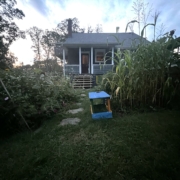
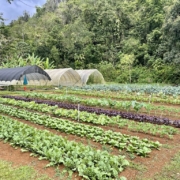 NCAT
NCAT
 Canva Pro
Canva Pro
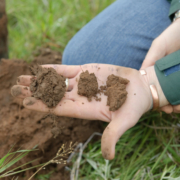
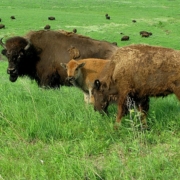

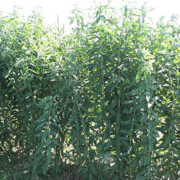

 USDA
USDA